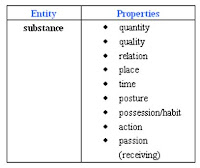The following is a draft of my introduction as I will pronounce it on Friday morning at this conference.
"Thank you to all of you for coming today and most of all for taking part to this project since its beginning. No part of it would have been possible without your participation.
Apart from welcoming and thanking you, I would like to make only two small points:
Last, a practical piece of information: everyone will have between 50 and 55 minutes at disposal. You can use as much as you want of it for your speech, but the last 25 minutes MUST be reserved for discussion. I will be merciless in cutting your speech once you have reached this limit. But this does not mean that you have to speak for 25--30 minutes. 5 minutes are enough, or even less, if you prefer.
Most important: once again, have fun!"
"Thank you to all of you for coming today and most of all for taking part to this project since its beginning. No part of it would have been possible without your participation.
Apart from welcoming and thanking you, I would like to make only two small points:
- —Especially for all among you who have never been to a Coffee Break Conference before: this whole meeting is supposed to occur in a pleasant and informal atmosphere. Our purpose is not to show how much we know, but to question what we have accepted without being aware of it. Thus, the speakers are invited to emphasise problems and not to be afraid of open questions. Participants are invited to ask, object and discuss, just like during a Coffee Break, in a constructive and participative atmosphere.
- —As for the specific topic of this meeting, some among us have been working on a joint project about the re-use of texts in Sanskrit Śāstra already since several years. This meeting is thus a way to focus on some of the questions which emerged during this work, such as:
- 1. Can we, finally, agree on the criteria which matter in the study of quotations (i.e., acknowledgement vs. non-acknowledgement; literality vs. non-literality; form vs. content; positive or negative evaluation, naming the source vs. not naming it…), and on a shared terminology?
- 2. Is it still possible to adopt the terminology proposed by Ernst Steinkellner (Ce, Cee, Re, Pv, etc.)? Should it be ampliated? Or does it only work within the framework of pramāṇavāda texts?
- 3. Are there major differences between the type of re-use in philosophical and in non-philosophical (here we will discuss in particular Vedic, religious and juridic) texts?
- 4. Are there school-specificities in the field of re-use? And what are their causes? For instance, can we say that Mīmāṃsā author emphasise the content over the form, whereas Buddhist Pramāṇavādins put more emphasis on exact quotations, perhaps because of the opposition between the doctrine of apauruṣeyatva and the charismatic figure of the Buddha as an author of the Canon? Or because of sociological reasons, such as the habit of learning by heart since a very early age?
Last, a practical piece of information: everyone will have between 50 and 55 minutes at disposal. You can use as much as you want of it for your speech, but the last 25 minutes MUST be reserved for discussion. I will be merciless in cutting your speech once you have reached this limit. But this does not mean that you have to speak for 25--30 minutes. 5 minutes are enough, or even less, if you prefer.
Most important: once again, have fun!"










